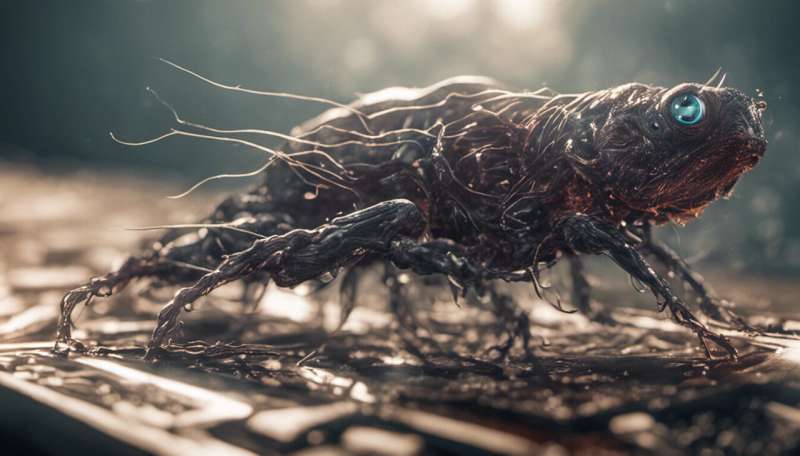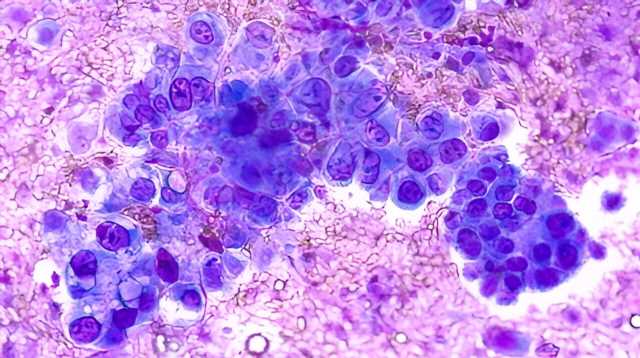
A protein famed among scientists and clinicians for its ability to suppress the development of many types of tumors may just be moonlighting as a cancer fighter, a recent study by researchers at Stanford Medicine found. The study, conducted in laboratory mice, suggests that the protein, p53, instead evolved to promote the repair of tissues and cells after injury.
The surprising finding is like learning that your favorite bit actor is actually an Oscar-winning director who dabbles in performance on the weekends.
“This turns what we thought we knew about p53 on its head,” said Laura Attardi, Ph.D., professor of radiation oncology and of genetics. “We need to consider that p53’s role as a tumor suppressor may be secondary to a more basic role in repairing damage to tissues.”
Attardi is the Catharine and Howard Avery Professor in the School of Medicine and is the senior author of the research, which was published July 19 in Nature. Former graduate student Alyssa Kaiser, Ph.D., is the lead author of the study.
Their study of p53’s role in lung cancer found that p53 orchestrates the transition of one type of lung cell into another type of lung cell—a critical transformation that happens when lung tissue is damaged. Without p53’s helpful nudging, the transitioning cell is stuck in a dangerous intermediate stage, freed from normal growth constraints.
Like unruly actors waiting in a green room for a call to the stage that never comes, the intermediate cells are what researchers call plastic, meaning they divide unchecked and can assume new cell fates, or roles, willy-nilly—hallmarks of a nascent cancer.
“These cells are clearly not good guys,” Attardi said. “In cancers they fuel tumor progression, and in other diseases they contribute to tissue damage.”
A secret life
The discovery that p53 is essential to lung repair after injury is surprising exactly because the protein is such a well-known character in cancer biology. Known for decades among science circles as “the guardian of the genome,” it monitors DNA for damage that might lead to cancer-causing mutations. When it senses trouble, it activates other proteins that can fix the DNA. If repairs are unsuccessful, p53 stops the cell from dividing and triggers the cell’s death.
Its critical role in tumor suppression is reflected in the fact that it is the most commonly mutated gene in human cancers. Attempts to develop new drug therapies based on p53’s function have been largely unsuccessful.
But the researchers’ findings suggest that cancer prevention may be just a side effect of p53’s real role as a master regulator of tissue repair.
Kaiser, Attardi and their colleagues studied laboratory mice engineered to develop lung cancers very similar to the most common type of lung cancer in humans. This type of lung cancer, called lung adenocarcinoma, is the leading cause of cancer deaths worldwide. About half of lung adenocarcinomas have mutations in p53; people with these cancers often have a poor prognosis.
Lung adenocarcinomas originate from a type of cell called AT2 located in the tiny sacs that exchange oxygen for carbon dioxide in the lung. AT2 cells secrete the surfactants that keep the sac from collapsing; another type of cell in the sacs called AT1 cells facilitate the gas exchange that keeps us alive with each breath. When the lung sacs are damaged, such as by exposure to chemicals, AT2 cells divide to make more AT2 cells. Some of these AT2 cells also transition, or differentiate, into AT1 cells to repair the damage.
Kaiser, Attardi and their colleagues studied three groups of mice. One had a normal, or wild-type, version of the p53 protein; another was unable to make p53 at all; and the third had a mutant version of p53 that Attardi’s earlier studies had shown that, paradoxically, was even better at suppressing the development of pancreatic cancers than the wild-type protein. They coined the mutant p53 a super-tumor-suppressor.
They found that mice without p53 developed more and larger lung tumors when the cancer-associated protein was triggered than mice with wild-type 53, while animals with the super-tumor-suppressor developed fewer and smaller tumors than either of the other groups.
When the researchers compared the genes that were activated in each group of animals, they found that the wild-type p53 enhanced the expression of genes involved in lung development and in the differentiation of AT2 cells into AT1 cells. The super-tumor-suppressor was even better than the wild type at stimulating the expression of these genes.
In effect, p53 activates genes that shepherd the transitioning AT2 cells speedily through the green room; it also ensures their transition to AT1 cells happens smoothly and without time for them to cool their heels and become troublemakers. The finding isn’t just surprising—it also suggests new therapeutic options.
“This is a really specific differentiation program that is induced by p53,” Attardi said, “and it gives some clues about new clinical approaches for lung cancer. If we could find a treatment that would push these aggressive transitional cells into the AT1 cell fate, we might keep them from accumulating and perhaps developing drug resistance.”
The researchers are eager to build on this study and learn more about how p53 may affect tissue regeneration after injury in other tissues, as well as other ways it might influence the balance of cell types, or homeostasis, during an organism’s lifespan.
“We really want to understand more broadly how important p53 is in normal homeostasis of lung cells as people age, for example, or when they are recovering from lung damage due to infections with viruses like SARS-CoV-2 or diseases like pulmonary fibrosis,” Attardi said. “Is p53 important in all contexts? Does it play a similar role in other tissues? And how does its role in differentiation and repair integrate with what we already know about its role in DNA damage and the cell cycle?”
More information:
Alyssa M. Kaiser et al, p53 governs an AT1 differentiation programme in lung cancer suppression, Nature (2023). DOI: 10.1038/s41586-023-06253-8
Journal information:
Nature
Source: Read Full Article
